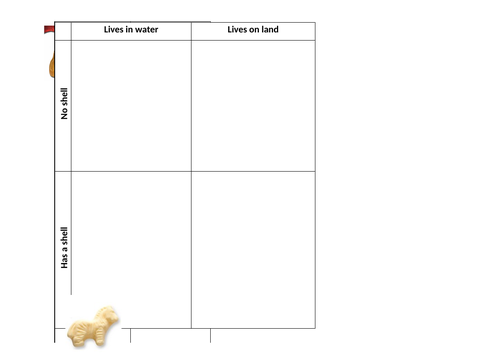








In this first lesson pupils should be taught to:
• Recognise that living things can be grouped in a variety of ways
• Use a keys, tables and diagrams to help group animals
• Identify and name a variety of living things from their local and wider environment
The following summary is based on notes and guidance from the National Curriculum.
The pupils will be classifying living things and presenting data in a variety of ways to help in answering questions, discussing their findings with peers and the staff. Instead of using written methods discussion could also be assessed through an activity like question, feeling, learning.
The pupils have the opportunity to group and classifying living things, carrying out simple comparisons using Carroll diagrams and Venn diagrams. They can also be given the chance to work independently by finding out more facts using secondary sources of information. In this lesson sweets have been used to make the activity more engaging. I also like to make use of secondary resources with more information such as top trumps cards including deadliest predators, creatures of the deep and deadly 60.
The resources can be used as a stimulus to talk about criteria for grouping, sorting and classifying. They should begin to look for naturally occurring patterns and relationships between animals that share similar features.
Pupils should explore possible ways of grouping a wide selection of living things that include animals. The Carroll diagrams, classification key and Venn diagrams has been designed to allow pupils to identify differences between vertebrate groups. The Venn diagrams are a resource to assess the pupils knowledge and for them to record the similarities and differences between different vertebrate groups. The activities have been specifically designed to provide the scaffolding needed for pupils to put vertebrate animals into groups such as fish, amphibians, reptiles, birds, and mammals.
Pupils are given scientific words to read and opportunities to spell scientific vocabulary correctly to build their confidence and to use their growing spelling knowledge in a scientific context. The word list, phonetic sounds and definitions have been provided which could be used during their weekly spelling test.
The students will record their findings using simple scientific language and by completing keys and tables.
Something went wrong, please try again later.
This resource hasn't been reviewed yet
To ensure quality for our reviews, only customers who have purchased this resource can review it
Report this resourceto let us know if it violates our terms and conditions.
Our customer service team will review your report and will be in touch.